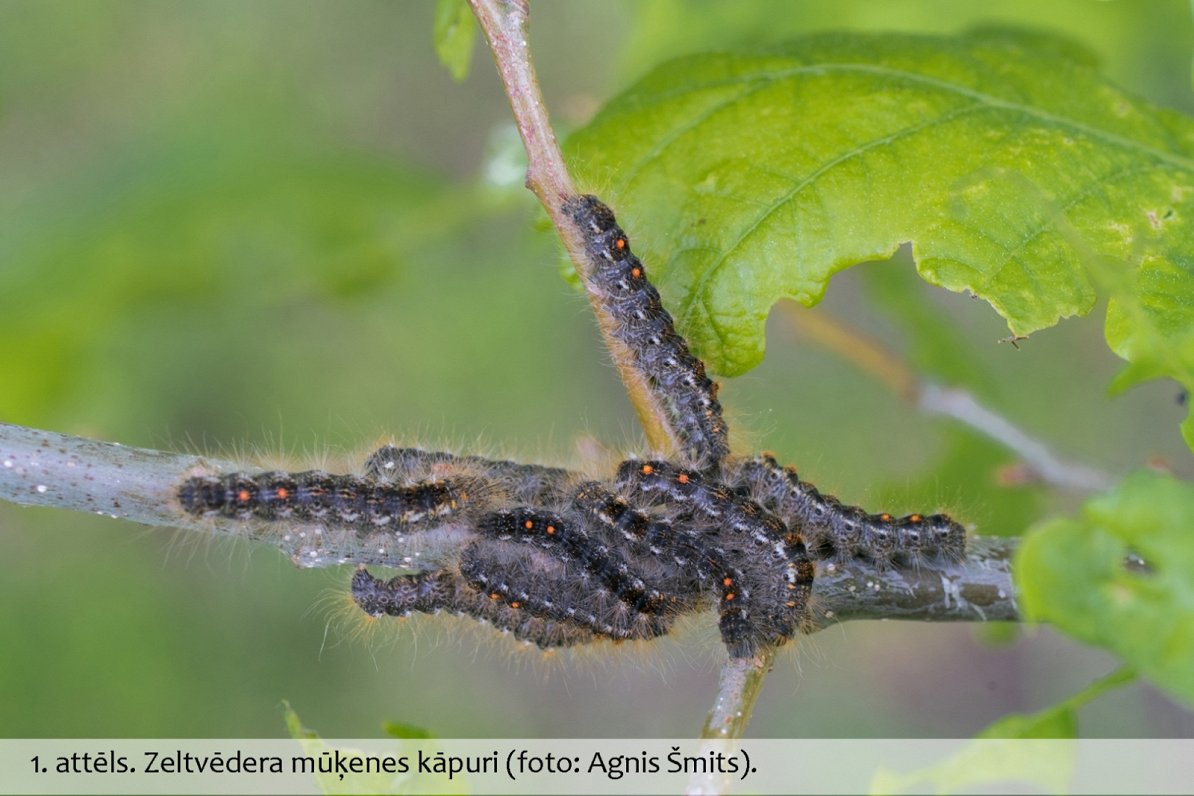In 2021, the first occurrence of the brown-tail moth was observed in Zemgale, and in 2022, the spread of the moth to new locations in Zemgale was detected. Last year, the pest was not detected in new locations.
The pest not only chews the leaves of many deciduous trees but also puts human health at risk.
The caterpillar is covered by hair. The caterpillars use the hairs to protect themselves by shedding them. These hairs are very small and sharp, and contain a toxin that causes skin and eye irritation in humans and can cause serious breathing problems in asthmatic people. The hairs can persist in the environment for several years. They are very light and can be repeatedly lifted into the air by the wind.
The rash caused by the hairs can appear immediately after contact with the caterpillars or after several hours. The rash can persist from a few hours to several weeks.
A prolonged infestation can also lead to tree death, said VAAD.
The brown-tailed moth needs plenty of light and warmth, so it is usually found in sunny areas such as thinned stands, forest edges, alleys, orchards, and similar places, said VAAD. Caterpillars can be found on many species of deciduous trees, including oaks, aspen, linden, elm, hawthorn, fruit trees (pear, plum, cherry, etc.) and a variety of other deciduous trees.
The moth has one generation per year. They lay their eggs in July. The eggs are laid in clusters on the underside of leaves and covered with hairs from the female's body hair. In August, the young larvae hatch from these eggs.
The caterpillars feed in groups on the leaves of the tree, and in autumn form webs in which both twigs and leaves are entangled. The webs can contain up to several hundred larvae, and these overwinter in the 'nests' created. The webs are usually small - about the size of a fist. They are concentrated in the upper part of the tree canopy.
The caterpillars resume feeding in April. Overwintered larvae disperse and feed individually. Fast-growing caterpillars can leave oaks completely leafless.
When the weather turns colder, the larvae return to their nests. In June, the larvae pupate either in groups or singly. Before pupating, the larvae disperse, looking for a place to pupate. At this stage of development, caterpillars can crawl into people's homes in large numbers. White moths with a brown back fly out in late June or early July.
The moths are attracted to light. They are mostly male. Females hide in the foliage of the host plant.
When working outdoors where the moths breed, it is advisable to wear goggles, a respirator, gloves and tight, dry clothing. If outdoor work is planned in dry weather, yard watering is recommended to prevent the toxic hairs from being re-elevated into the air and sticking to the ground.
To get rid of caterpillars that have infested residential buildings, it is best to use a vacuum cleaner with a water filter, adding a little soap to the water. If the infestation has just started, cutting off the coiled 'nests' in winter and early spring, when the larvae have not yet left their nests, is very effective.
When the spread of the brown-tailed moth is suspected, it is important not to expose young children and people prone to asthma to allergenic risks, stresses VAAD.
The only effective action to take is to cut off the tree branches with the larvae and burn them.
Rubber gloves should be used to avoid a possible allergic reaction caused by the caterpillar hairs, and a respirator and goggles are recommended.
Before gardening and mowing the lawn, it is advisable to water the ground to avoid possible contact with the hairs.
In order to determine the extent of the pest infestation, Latvian residents, especially those living in the Zemgale region, are asked to report observations of the pest in forests to the State Forest Service at [email protected], and observations of the pest in home gardens and green areas to the State Plant Protection Service at [email protected].



























